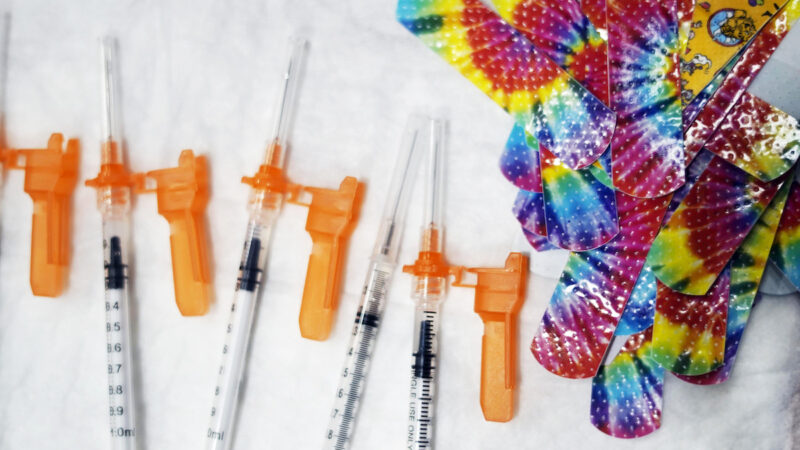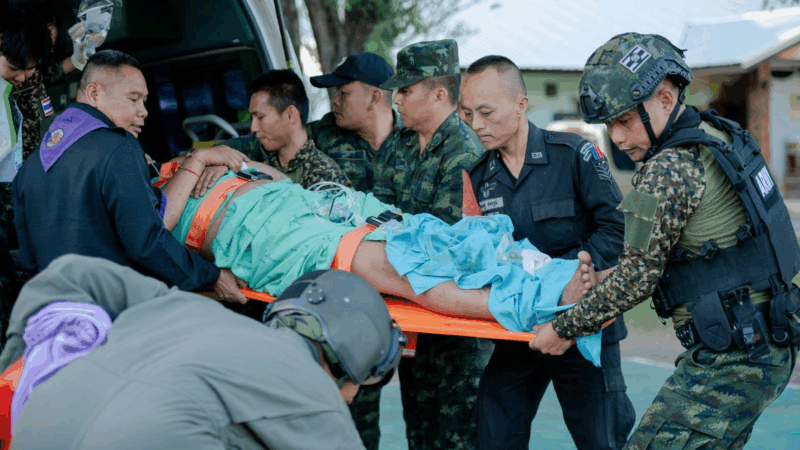EXPLAINER: COVID vaccines for kids under 5: What’s next?
Syringes and colorful bandages are prepared as children from Pittsfield schools visited Morningside School to get COVID-19 vaccines in Pittsfield, Mass., on Monday Dec. 13, 2021. Some of the kids were getting their first shot, a few were getting their second.
By Lauran Neergaard, AP Medical Writer
Parents who thought their children under 5 would have to wait several more months for COVID-19 vaccinations instead just might get them as early as March. Here’s what needs to happen first, and some things to expect if they do become available in the U.S.
Government review
Pfizer has asked the Food and Drug Administration to authorize extra-low doses of its COVID-19 vaccine for children ages 6 months through 4 years. The FDA will review the application and convene a panel of outside advisers in mid-February to debate the data. The FDA will use that advice in deciding whether the new doses are safe and effective enough for the youngest children.
But that’s not the last step. The Centers for Disease Control and Prevention will gather its own expert panel to help decide if the shots should be recommended for this age group — and if so, for all of them or only those at higher risk from COVID-19.
Special shots
Shots for children in this age group are one-tenth the size of the adult doses. That’s even smaller than the doses given for 5- to 11-year-olds, which are one-third the dose. Pfizer will have to specially bottle the extra-low doses so vaccine providers don’t mix them up with the two other dosages already being used.
Two doses or three?
Here’s where this gets complicated. In December, Pfizer announced a setback: Preliminary study results showed two of the extra-low doses appeared strong enough to protect babies but weren’t strong enough for 2- to 4-year-olds. The company added a third shot to the study, but results are not expected until late March.
Still, the FDA took the highly unusual step of urging Pfizer to apply now for a two-dose series with potentially a third shot added later. During the FDA advisory committee meeting, the public will get its first look at any new evidence of whether two extra-low doses are working better than initially expected among the preschoolers.
If cleared, where would the shots be given?
While the government expanded pharmacists’ ability to vaccinate children during the pandemic, shots for the youngest children primarily are given in pediatricians’ offices.
What about kids younger than 6 months?
There are no plans to test shots in newborns.
Will the shots be in high demand?
Vaccinations have been lower among children than in other age groups, a pattern likely to continue with kids under 5. As of last week, just 20% of kids ages 5 to 11 and just over half of 12- to 17-year-olds were fully vaccinated, according to the American Academy of Pediatrics. Nearly three-quarters of adults are fully vaccinated. While COVID-19 tends to be less severe in children than adults, the omicron wave has caused record numbers of child hospitalizations.
The Associated Press Health and Science Department receives support from the Howard Hughes Medical Institute’s Department of Science Education. The AP is solely responsible for all content.
Tributes, not politics, play center stage as Trump hosts the Kennedy Center Honors
President Trump said he was closely involved with picking the honorees, and on Sunday he became the first president to host the Kennedy Center awards ceremony.
Thailand launches airstrikes along border with Cambodia as tensions reignite
Both sides accused the other of breaking a ceasefire that halted fighting earlier this year. Longstanding border disputes erupted into five days of combat in July that killed dozens.
Rafael Ithier, a legend of salsa music, dies at 99
The pianist, composer and arranger spent more than six decades turning El Gran Combo into one of the premier salsa institutions of Latin America and beyond.
Light from satellites will ruin majority of some space telescope images, study says
Astronomers have long been concerned about reflections from satellites showing up in images taken by telescopes and other scientific instruments.
Defense Department is reviewing boat strike video for possible release, Hegseth says
In a speech on Saturday, Defense Secretary Pete Hegseth defended the strikes, saying: "President Trump can and will take decisive military action as he sees fit to defend our nation's interests."
Bama, Miami in, Notre Dame out and Indiana No. 1 in College Football Playoff rankings
Nobody paying attention for the past 24 months would be surprised to see Indiana – yes, Indiana – leading the way into this year's College Football Playoff.









